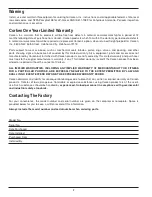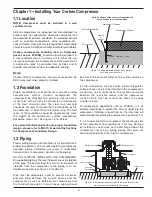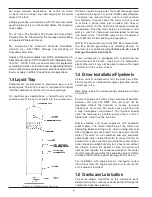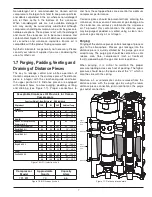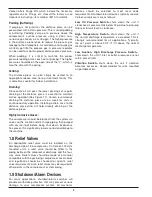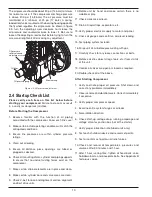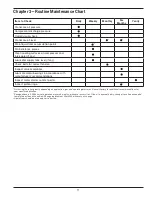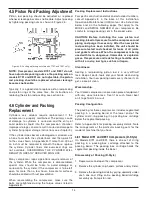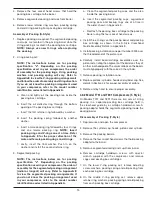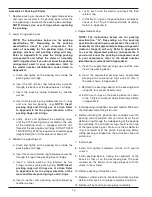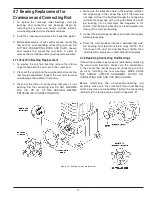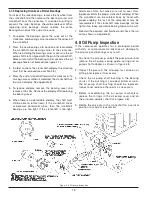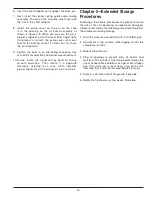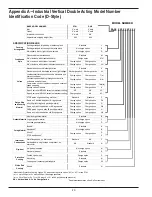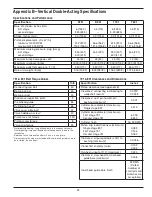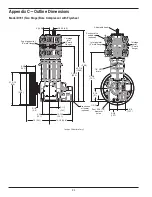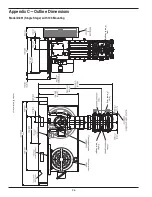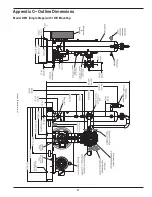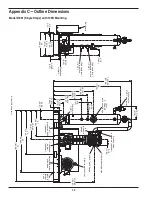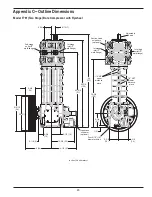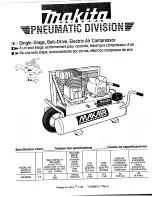
4.5 Piston Rod Packing Adjustment
Piston rod packing should be adjusted or replaced
whenever leakage becomes noticeable. Adjust packing
by tightening packing nuts as shown in Figure 4.5.
Figure 4.5: Packing adjusting nuts (models T791 and T891 only)
NOTE: Compressor models D791 and D891 do not
have adjustable packing nuts so the packing sets on
models D791 and D891 are not adjustable, the piston
rod packing should be replaced whenever leakage
becomes noticeable.
Typically, it is a good idea to replace piston rod packing
and piston rings at the same time. For instructions on
replacing the piston rod packing, see section 4.6.
4.6 Cylinder and Packing
Replacement
Cylinders very seldom require replacement if the
compressor is properly maintained. The primary cause
of damage to cylinders is corrosion and the entry of
solid debris or liquid into the compression chamber.
Improper storage can also result in corrosion damage to
cylinder (for proper storage instructions see chapter 5).
If the cylinder does become damaged or corroded, use
a hone to smooth the cylinder bore and then polish it
to the value shown in Appendix B. If more than .005 of
an inch must be removed to smooth the bore, replace
the cylinder. Cylinder liners and oversized rings are
not available. OVERBORING THE CYLINDER WILL
RESULT IN GREATLY REDUCED RING LIFE.
Many compressor repair operations require removal of
the cylinder. While the compressor is disassembled,
special care should be taken to avoid damage or
corrosion to the cylinder. If the compressor is to be left
open for more than a few hours, bare metal surfaces
should be coated with rust preventative.
When reassembling the compressor, make sure the
bolts are retightened using the torque values listed in
Appendix B.
Packing Replacement Instructions
For specific construction details and actual part numbers,
consult Appendix E in the back of this Installation,
Operation & Maintenance (IOM) manual. Use instructions
below and on the following pages that apply to the
MODEL and SERIAL NUMBER of your compressor. Be
careful to arrange packing sets in the proper order.
CAUTION: Before installing the new piston rod
packing, bleed all pressure from the compressor and
piping and purge if necessary. After the new piston
rod packing has been installed, the unit should be
pressure tested and checked for leaks at all joints
and gasket surfaces. When the compressor is being
used with toxic, dangerous, flammable or explosive
gases, this pressure and leak testing should be done
with air or a dry, inert gas such as nitrogen.
Cleanliness:
Sealing a reciprocating piston rod is a very difficult
task. Keep all parts, tools and your hands clean during
installation. Your new packing needs every chance it can
get, so keep it clean.
Workmanship:
Your Corken compressor is a precision piece of equipment
with very close tolerances. Treat it as such. Never beat
on it to get parts in or out.
Packing Configuration
The packing for these compressors includes segmented
packing in a packing barrel at the lower end of the
cylinder and V-ring packing in a packing box cartridge
below the segmented packing.
Refer to Appendix E for packing assembly details. Note
the arrangement of the particular packing sets for the
model of machine that you have.
4.6.1 Model D791 and D891 Compressors (D-Style)
On Models D791 and D891, there is one set of V-ring
packing in a packing box cartridge attached to the
packing barrel. The packing box cartridge holds the
segmented packing inside the barrel.
Disassembly of Packing (D-Style)
1. Depressurize and open the compressor.
2. Remove the cylinder cap, heads, pistons and cylinder.
3. Remove the packing barrels by prying upwardly under
each one and lifting entire packing barrel/cartridge
assembly up from piston rod.
14


